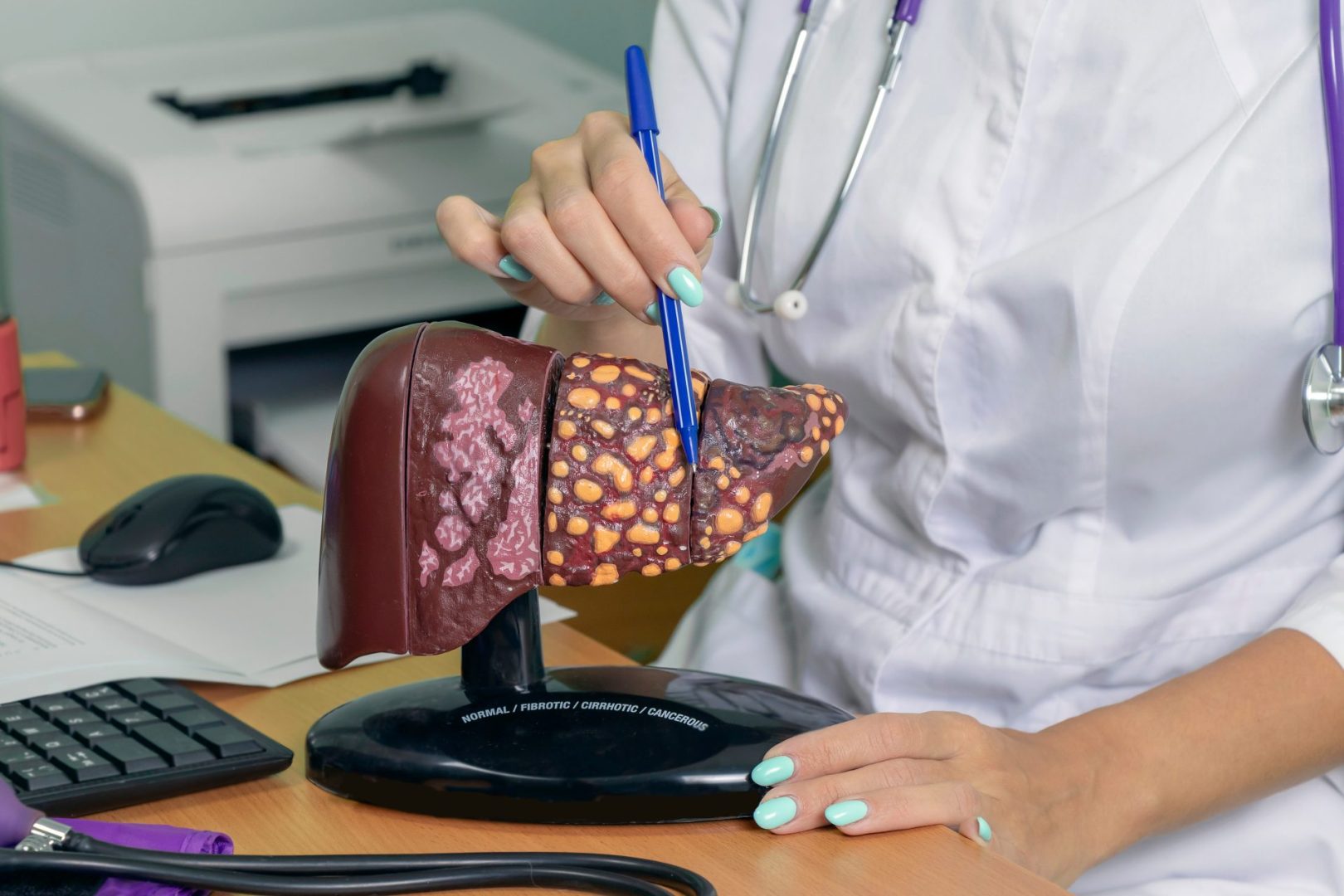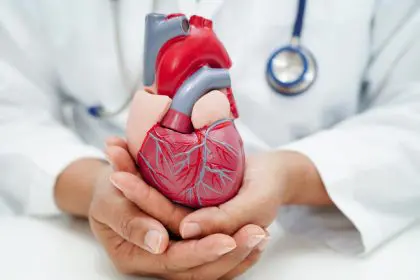These simple lifestyle changes can help safeguard one of your body’s most vital organs from permanent damage
Your liver silently performs hundreds of essential functions every day, but this powerhouse organ faces growing threats in modern life. Liver fibrosis—the buildup of scar tissue that can eventually impair liver function—affects millions of Americans, often without obvious symptoms until significant damage has occurred.
Recent medical advances have revealed that this condition is both more common and more preventable than previously thought. Understanding how to protect your liver could save your life, as fibrosis can ultimately lead to liver failure when left untreated.
What exactly happens during liver fibrosis
Liver fibrosis develops when the body’s largest internal organ attempts to heal itself from ongoing injury. This natural repair process involves creating scar tissue, which wouldn’t be problematic in small amounts. However, with continuous damage over months or years, excessive scarring accumulates and disrupts the liver’s normal architecture.
“Think of your liver as a sophisticated processing plant,” explains one medical professional who specializes in liver health. “When repeatedly injured, the factory workers (liver cells) get replaced by rigid scaffolding (scar tissue) that can’t perform the same functions.”
This scarring process doesn’t happen overnight. Most people experience gradual damage over many years before noticeable symptoms develop. The concerning reality is that by the time obvious signs appear, the condition may have progressed to advanced stages that are harder to treat.
The 7 most common causes of liver fibrosis
- Metabolic-associated fatty liver disease (MAFLD) – This condition occurs when excess fat builds up in the liver cells of people who drink little to no alcohol. MAFLD affects roughly 25% of Americans and has become the leading cause of liver transplants in the United States.
- Metabolic dysfunction-associated steatohepatitis (MASH) – A more severe form of MAFLD, MASH involves both fat accumulation and inflammation that actively damages liver cells, accelerating the progression to fibrosis.
- Chronic alcohol consumption – Regular excessive drinking remains one of the most well-known causes of liver damage. The liver can process limited amounts of alcohol, but consistent overuse triggers inflammation and cell death.
- Viral hepatitis infections – Both hepatitis B and C can cause chronic liver inflammation when not cleared by the immune system. Without treatment, these infections may silently damage the liver for decades.
- Autoimmune liver diseases – Conditions where the body’s immune system mistakenly attacks liver cells can trigger ongoing inflammation and scarring. These include autoimmune hepatitis, primary biliary cholangitis, and primary sclerosing cholangitis.
- Genetic disorders – Inherited conditions like hemochromatosis (iron overload) and Wilson disease (copper accumulation) cause metals to build up in liver tissue, eventually leading to cell damage and scarring.
- Medication-induced liver injury – Certain prescription drugs, over-the-counter medications, and supplements can cause liver damage, especially when taken at high doses or for extended periods.
Who faces the highest risk for developing liver fibrosis
Not everyone exposed to these risk factors will develop significant liver scarring. Research shows certain groups face substantially higher risks:
People carrying excess weight, particularly around the abdomen, face dramatically increased risk of fatty liver disease, which can progress to fibrosis.
Those with type 2 diabetes or metabolic syndrome experience faster progression from simple fatty liver to more serious forms of liver damage.
Regular consumers of alcohol, especially those drinking daily or engaging in binge drinking patterns, continually expose their liver to toxic effects.
Individuals with untreated viral hepatitis infections experience ongoing inflammation that gradually scars the liver over decades.
Adults between ages 35 and 64 are increasingly diagnosed with liver fibrosis, often related to lifestyle factors accumulated over years.
People with family histories of liver disease may have genetic predispositions that accelerate damage when exposed to common risk factors.
Recognizing the warning signs that shouldn’t be ignored
The insidious nature of liver fibrosis means early stages rarely cause noticeable symptoms, earning it the nickname “the silent liver disease.” However, as scarring advances, the body begins sending increasingly urgent signals:
Persistent fatigue that isn’t relieved by rest often serves as the earliest warning sign. This fatigue stems from the liver’s diminished ability to process toxins and nutrients efficiently.
Unexplained weight loss or poor appetite might develop as the liver struggles to process nutrients and regulate metabolism.
Discomfort in the upper right abdomen, ranging from a dull ache to more pronounced pain, can indicate liver inflammation and expansion.
Itchy skin without an obvious rash frustrates many patients with advancing liver disease, caused by bile salt accumulation in the skin.
More concerning signs that warrant immediate medical attention include yellowing of the skin or eyes (jaundice), swelling in the legs or abdomen, easy bruising or bleeding, and mental confusion.
How doctors diagnose this often silent condition
Medical professionals use multiple approaches to detect liver fibrosis, often starting with least invasive methods:
Blood tests check liver enzyme levels and measure specific proteins that indicate fibrosis progression. New specialized blood panels can estimate fibrosis severity with increasing accuracy.
Imaging studies like ultrasound, CT scans, and MRI provide visual information about liver size, texture, and blood flow patterns that change with advancing scarring.
Specialized elastography techniques, including FibroScan, measure liver stiffness non-invasively, correlating strongly with the amount of scarring present.
For definitive assessment, liver biopsy remains the gold standard, though doctors increasingly rely on combinations of less invasive tests to avoid biopsy risks when possible.
The 7 most effective ways to protect your liver
- Maintain healthy weight – Even modest weight loss of 5-10% can significantly reduce liver fat and inflammation, potentially reversing early fibrosis. Focus on sustainable lifestyle changes rather than crash diets.
- Limit alcohol consumption – For optimal liver health, experts recommend no more than one drink daily for women and two for men, with several alcohol-free days each week. Those with existing liver concerns should consider abstaining completely.
- Follow a liver-friendly diet – Emphasize fruits, vegetables, whole grains, and healthy fats. The Mediterranean diet pattern has shown particular benefits for liver health in multiple studies.
- Stay physically active – Regular exercise improves insulin sensitivity and reduces liver fat even without significant weight loss. Aim for at least 150 minutes of moderate activity weekly.
- Manage chronic conditions – Controlling diabetes, high cholesterol, and high blood pressure reduces strain on the liver and slows fibrosis progression.
- Get vaccinated – Hepatitis A and B vaccines provide critical protection against these viruses that can cause acute and chronic liver damage.
- Practice medication safety – Take medications only as prescribed, avoid exceeding recommended dosages of over-the-counter drugs (particularly acetaminophen), and inform healthcare providers of all supplements you take.
When treatment becomes necessary
While preventing liver damage remains the ideal approach, treatment options continue expanding for those already experiencing fibrosis:
Addressing underlying causes forms the foundation of treatment. This might include antiviral medications for hepatitis, weight management programs for fatty liver disease, or alcohol cessation support.
Anti-fibrotic medications that directly target the scarring process show promise in clinical trials, though most remain experimental outside specific conditions.
Advanced cases may eventually require liver transplantation, though the waiting list far exceeds available organs—making prevention and early intervention crucial.
“The most remarkable aspect of the liver is its regenerative capacity,” notes a leading hepatologist. “When given the chance through lifestyle changes and appropriate medical care, the liver can actually reverse early to moderate fibrosis.”
Understanding liver fibrosis represents an important step toward protecting this vital organ. By recognizing risk factors and implementing preventive strategies, most people can maintain healthy liver function throughout their lives. For those already experiencing liver concerns, early intervention offers the best chance for halting or reversing damage before it progresses to more serious stages.
With greater awareness of this common but underrecognized condition, more Americans can preserve their liver health and avoid the potentially life-threatening complications of advanced liver disease.

















